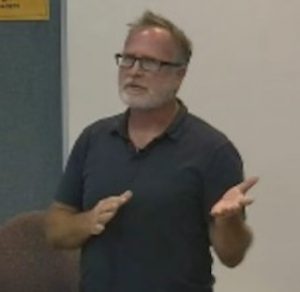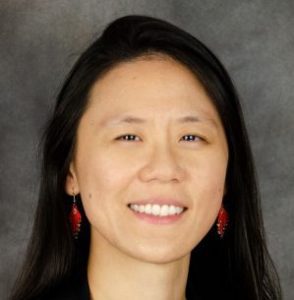
A Journey in COVID-19 Pandemic Modeling for the Hawaiian Islands
ABOUT EVENT
Register for the seminar: http://go.hawaii.edu/JJq
Seminar Abstract:
The current pandemic highlighted the need for an interdisciplinary approach involving mathematicians, computer scientists, engineers, biologists and social scientists to generate a broader dialogue and effective communication approaches capable of conveying insights into the potential spread of pathogens to wider audiences. Hawai‘i Pandemic Applied Modeling (HiPAM) is a voluntary partnership of Hawai‘i-based epidemiologists, data scientists, and health professionals that was formed in April 2020 by Dr. Victoria Fan in response to the pandemic. Since then HiPAM has: Closely monitored COVID transmission and data; Examined the influence of multiple policy interventions on COVID transmission; Publicly maintained a two-week COVID forecast since July 2020 through calibrating multiple models (compartmental and agent based); Communicated to the public about the forecast; Upon request, provided scenario and decision support of different interventions (‘What If’ scenarios).
Key to the work of HiPAM is mathematical modeling. Mathematical models have been central to the public and policy debate throughout the COVID-19 pandemic. When combined with empirical data, modeling provides a valuable tool to characterize the extent of an epidemic, predict the scale of the potential healthcare problem, and explore the impact of different intervention strategies. For contained environments such as archipelagos, our work analyzed the heterogeneity effects to discern what level of granularity and detail is appropriate for making policy decisions related to curtailing disease spread. We also analyzed complexity both in terms of conceptual design and computational time of two types of epidemiological models: compartmentalized SEIR model and the COVID-19 Agent-based Simulator.
In this talk we will be reflecting upon a year of modeling in the current COVID-19 pandemic, for the State of Hawai‘i, discussing challenges and how it could serve as a stepping stone toward the creation of a more established structure such as a prevention pandemic center. The pandemic has been providing a unique opportunity for students to participate in research spanning experimental, modeling, computational and data sciences we will also address in this talk.
Speakers Bio:

Tom Blamey is currently a member of the mathematics faculty and statistics/data science coordinator at the University of Hawai‘i Maui College. After earning his BS in Mathematics/Actuarial Science at Central Washington University, Tom went on to work as a programmer, data scientist, actuary in San Diego for 15 years, followed by 15 more years of teaching at universities/colleges in San Diego. Tom holds a MS in Biostatistics/Statistics from San Diego State University. He currently volunteers as a co-chair of HiPAM.

Dr. Monique Chyba joined the department of Mathematics at the University of Hawai‘i at Mānoa in 2002 after a journey that took her from Switzerland (where she got her PhD) to Paris, Harvard, Princeton, Santa Cruz and finally Honolulu. Dr. Chyba’s main research area concerns the development of geometric methods to solve optimal control problems. One of her central objectives has been to understand the role of singular extremals in optimal strategies for nonlinear control systems. More specifically, a primary objective is to use differential geometric techniques to exploit in the so-called time optimal problem the particular structure of the Lie algebra formed by the vector fields describing a controlled mechanical system. Her research is oriented towards applications with a special emphasis on the motion planning problem for unmanned underwater or aerial vehicles. Modeling and computational/data driven research has become a larger focus over the last few years for Dr. Chyba. In particular with a group of colleagues and students, and in partnership with the HiPAM, they developed models and mathematical tools to analyze the spread of COVID-19 during the current pandemic.

Dr. Alice Koniges is a computational scientist at the University of Hawaii and Maui High Performance Computing Center specializing in the modeling of highly complex physical phenomena using the latest in computer technologies. She has a passion for helping others with practical demonstrations of the real utility of High Performance Computing (HPC). Her research interests include emerging architectures, programming models, machine learning and partial differential equations. Previous to Hawaii Alice was at Berkeley Laboratory, and also held joint appointments with UC Berkeley and UCLA.
Dr. Koniges’ team developed the ALE-AMR code which models plasma, fluids and solids in high energy density regimes for a wide variety of applications. As principal investigator, she led applications for the DOE Exascale project to demonstrate a major milestone in million-trillion-operations-per-second supercomputing and several other multimillion dollar contracts for DOE. She also served as Head of Institutional Computing at the DOE Livermore Lab and pioneered several Cooperative Research and Development Agreements with Industry to advance HPC applications for the government. Dr. Koniges has published over 100 technical papers, two books on HPC and has more than 1500 citations on her work. She has served as mentor to more than 15 post-docs and graduate students. Alice is the first woman to receive a PhD in Applied and Computational Mathematics at Princeton University. She also holds MSE and MA degrees.
 Dr. Victoria Fan is an associate professor of health policy based at the University of Hawai‘i at Mānoa. She is also an FXB fellow at the Francois Xavier Bagnoud Center for Health and Human Rights at Harvard University, an adjunct fellow at the East West Center, and a visiting fellow at the Center for Global Development. She earned her doctor and master of science in global health and population from Harvard School of Public Health and bachelor of science in mechanical engineering from the Massachusetts Institute of Technology. Her work in health economics and health systems has contributed to identifying the health financing transition, landscaping the health workforce in China and India, and assessing payment and incentive mechanisms. She has written papers on aid effectiveness and value for money of development assistance for health. Her work using impact evaluation and economic evaluation in health have assessed the costs and benefits of health interventions and health risks, including social policy, diabetes prevention, dental sealants, end-of-life care, and pandemic influenza. She has been invited as a guest speaker by, or given advice to, multilateral institutions (e.g. UNICEF and WHO) as well as national governments (e.g. China, India, South Korea, Thailand). She has worked with nongovernmental organizations in Asia (BRAC, SEWA, Tzu Chi) and at units at Harvard University (Harvard Initiative for Global Health, Harvard Global Equity Initiative, Harvard University Program for Health Care Financing). She previously served as a consultant for the China Medical Board, World Bank and World Health Organization and on studies supported by the Rockefeller Foundation and the Bill & Melinda Gates Foundation.
Dr. Victoria Fan is an associate professor of health policy based at the University of Hawai‘i at Mānoa. She is also an FXB fellow at the Francois Xavier Bagnoud Center for Health and Human Rights at Harvard University, an adjunct fellow at the East West Center, and a visiting fellow at the Center for Global Development. She earned her doctor and master of science in global health and population from Harvard School of Public Health and bachelor of science in mechanical engineering from the Massachusetts Institute of Technology. Her work in health economics and health systems has contributed to identifying the health financing transition, landscaping the health workforce in China and India, and assessing payment and incentive mechanisms. She has written papers on aid effectiveness and value for money of development assistance for health. Her work using impact evaluation and economic evaluation in health have assessed the costs and benefits of health interventions and health risks, including social policy, diabetes prevention, dental sealants, end-of-life care, and pandemic influenza. She has been invited as a guest speaker by, or given advice to, multilateral institutions (e.g. UNICEF and WHO) as well as national governments (e.g. China, India, South Korea, Thailand). She has worked with nongovernmental organizations in Asia (BRAC, SEWA, Tzu Chi) and at units at Harvard University (Harvard Initiative for Global Health, Harvard Global Equity Initiative, Harvard University Program for Health Care Financing). She previously served as a consultant for the China Medical Board, World Bank and World Health Organization and on studies supported by the Rockefeller Foundation and the Bill & Melinda Gates Foundation.
